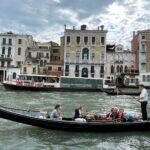BJX Airport is quite a distance from Guanajuato. After arriving, I exchanged a small amount of Mexican pesos at the currency exchange in the airport, where the exchange rate was decent. Once outside the airport, I called an Uber, which was quoted at under 400 pesos. A driver quickly accepted the ride, but I noticed on the map that he wasn’t moving for a while. He even tried calling me, which reminded me of something I read online about Uber drivers in Guanajuato sometimes calling to negotiate a price increase before coming to pick you up. To avoid this, I didn’t answer the call and ended up canceling the ride.
Instead, I returned to the airport terminal to the taxi counter, where they could arrange a cab for me. The staff asked for my destination and the number of passengers. We provided the address of our accommodation, and they quoted a fixed price of 590 pesos. We paid at the counter, and they assigned us a taxi, which felt like a more reliable option.
The accommodation we booked is perched on a hillside, featuring an industrial-style loft with modern decor. The space is spacious, and the large floor-to-ceiling windows offer a view of the colorful houses below.
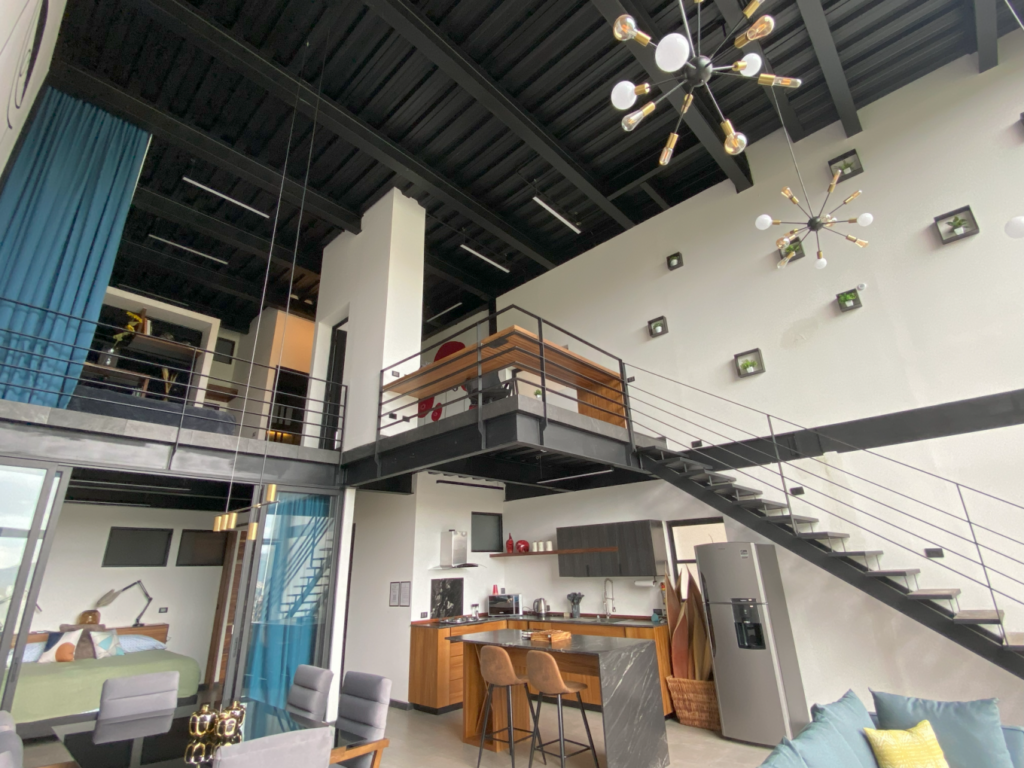

Guanajuato
Waking up early, I could see the amazing view outside through the large floor-to-ceiling windows. After freshening up, I planned to walk down to the town center, but encountered an unmonitored large dog on the way, which made me feel unsafe, so I called an Uber to take me to Baratillo Square.
I grabbed a corn tortilla for breakfast from a street vendor in a narrow alley, and a kind person nearby who spoke English helped translate for me. After that, I strolled around the town center, which was bustling with tourists. I visited the famous Alley of the Kiss, where couples were lining up to take photos. Given the relatively high number of tourists and the average safety conditions, there were police patrolling the area. I even encountered a police officer who asked where we were from and if we were having any issues, assuring us we could approach them if needed; their English was quite good.


I made my way up the steps in the alley to the top of Pipila Hill, where the weather was beautiful and the view of Guanajuato looked like a colorful palette. Guanajuato is known as the inspiration for the movie Coco.
For lunch, I stopped at Truco 7 Restaurant. In the afternoon, I joined a walking tour I had booked earlier on Viator. The guide was a young local woman with excellent English, and she provided a detailed explanation of Guanajuato’s history and culture, which was quite engaging.
Guanajuato was once a major silver mining hub and, in the 18th century, was one of the world’s largest silver centers. Even today, silver mines are still in operation around the area, many of which are invested in by Canadian mining companies.
Due to the extensive mining activities, a vast network of underground tunnels was created for transporting ore, many of which were later converted into city tunnels. Additionally, because Guanajuato is situated in a valley, the city often faces the threat of flooding. To mitigate this risk, tunnels were built at the valley’s bottom to redirect water flow. These flood control tunnels have since been transformed into roadways, becoming one of Guanajuato’s main transportation routes.
For dinner, I enjoyed fajitas at Santo Cafe, a place recommended by my guide. After the meal, I called an Uber back to my accommodation. The first car I ordered was canceled, and I had to wait another 10 minutes for the second one to arrive.
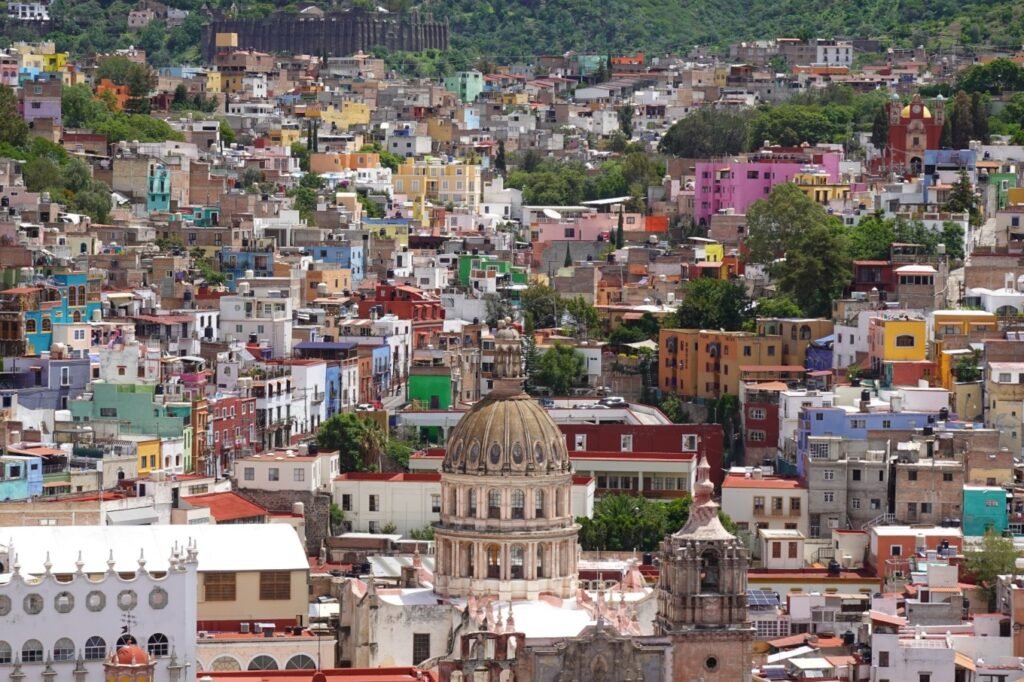

San Miguel
In the morning, I called an Uber to the long-distance bus station in Guanajuato, but once again, the first driver canceled the ride. I waited another 10 minutes for the second one to arrive, thankfully leaving with enough time to spare.

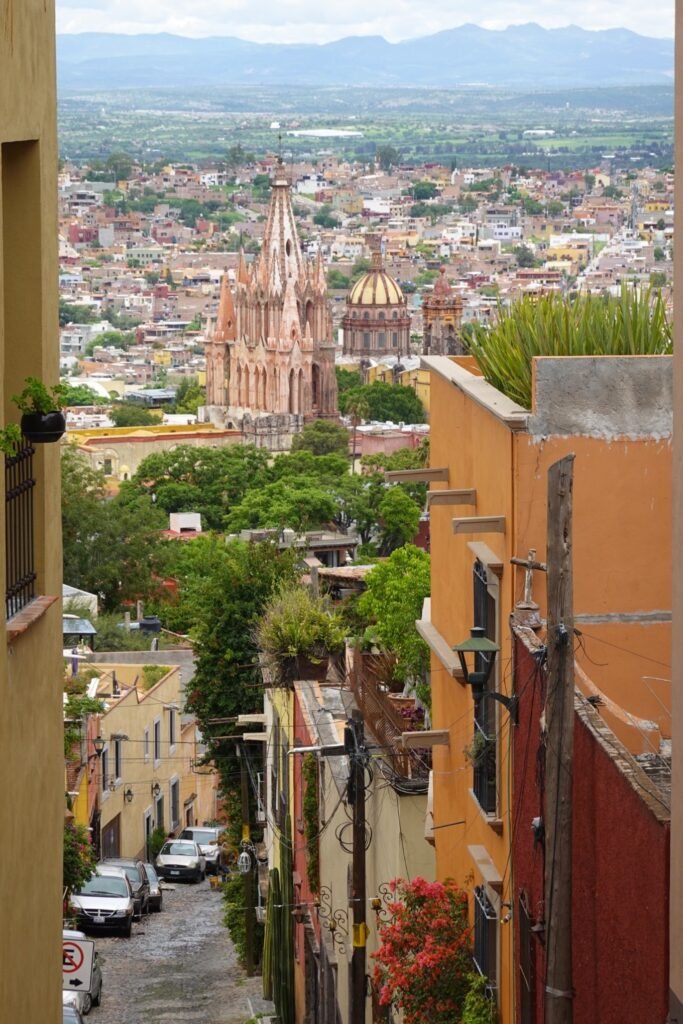
The bus ride to San Miguel de Allende (SMA) took just over an hour, operated by both ETN and Primera Plus. We opted for Primera Plus, which turned out to be the most luxurious bus I’ve ever taken, with seat spacing comparable to business class on a flight and individual entertainment screens for each seat. At one point, our bus was slowly crossing a railway track when suddenly, a train appeared around the bend, whistling as it approached. The bus had just cleared the tracks when the train roared by, startling everyone on board. Surprisingly, there were no barriers on either side of the tracks—whether to cross seemed entirely up to the driver’s judgment, which was quite risky.
From the SMA bus station, it was a short Uber ride to the city center. We had brunch at a restaurant called Bani, then strolled along the cobblestone alleys to the Parroquia de San Miguel Arcángel (The Angel Cathedral). Afterward, we continued uphill through the narrow streets to El Mirador for a panoramic view of the city.
San Miguel is rich in artistic spirit, with art galleries, shops, cafés, and restaurants tucked into its winding, hilly streets. The Mercado de Artesanías, a market selling various handicrafts, is another delightful spot to explore. The pleasant climate and affordable prices have attracted many Americans who choose to retire here.
We had originally booked a 4:40 PM bus back to Guanajuato, but since it started raining later in the afternoon, we went to the station early and successfully changed our tickets at the last minute.
Back in Guanajuato, we had dinner at Casa Valadez, a well-reviewed restaurant in the heart of the city. Although the food wasn’t extraordinary, the restaurant’s ambiance and prime location made it worth the visit.
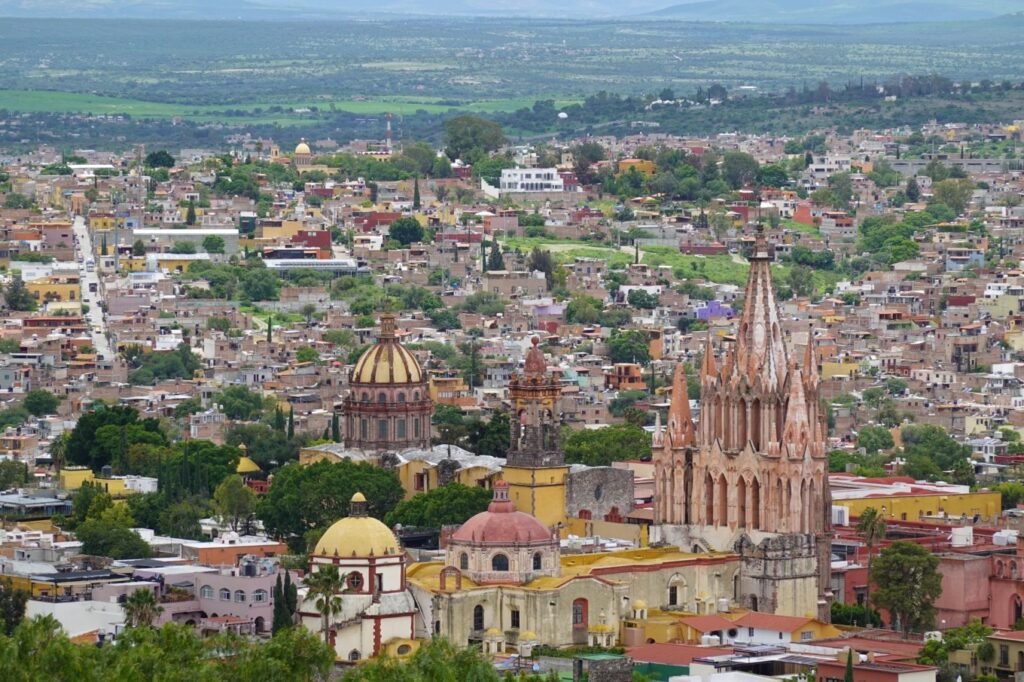
Guanajuato to Mexico City
We left Guanajuato and took a bus to Mexico City, this time with ETN, a more luxurious double-decker bus. Along the highway, we passed a group of people walking in procession for several kilometers, with some carrying crosses and statues of Jesus. The journey took six hours, with some traffic delays along the way, making it feel quite long.
The bus arrived at Mexico City’s northern bus terminal, Terminal Central de Autobuses del Norte. We paid for a taxi at the taxi counter, received a ticket, and waited in line at the entrance, where staff helped arrange rides. After exchanging a few polite words, the staff immediately asked for tips, saying, “tips, tips.”
Traffic in Mexico City was heavy, as expected. Our Airbnb was in the Roma Norte neighborhood, a modern apartment building with 24-hour security downstairs, though unfortunately, there was no elevator.
For dinner, we went to Taquería Álvaro Obregón nearby, where we tried a variety of tacos. All of them were delicious, especially the simple yet flavorful pork Pastor taco. The food was excellent and reasonably priced, making it a great way to end the day.


Mexico City
At an altitude of over 2,240 meters, Mexico City is one of the highest capital cities in the world.
Today, we planned to explore the attractions around Constitution Square (Zócalo). Concerned about traffic congestion, we decided to try the metro. There was a station on Line 3 near our Airbnb, but it took us a while to find the entrance. A kind older man offered to take us there and even offered to swipe us in with his metro card, but we politely declined.
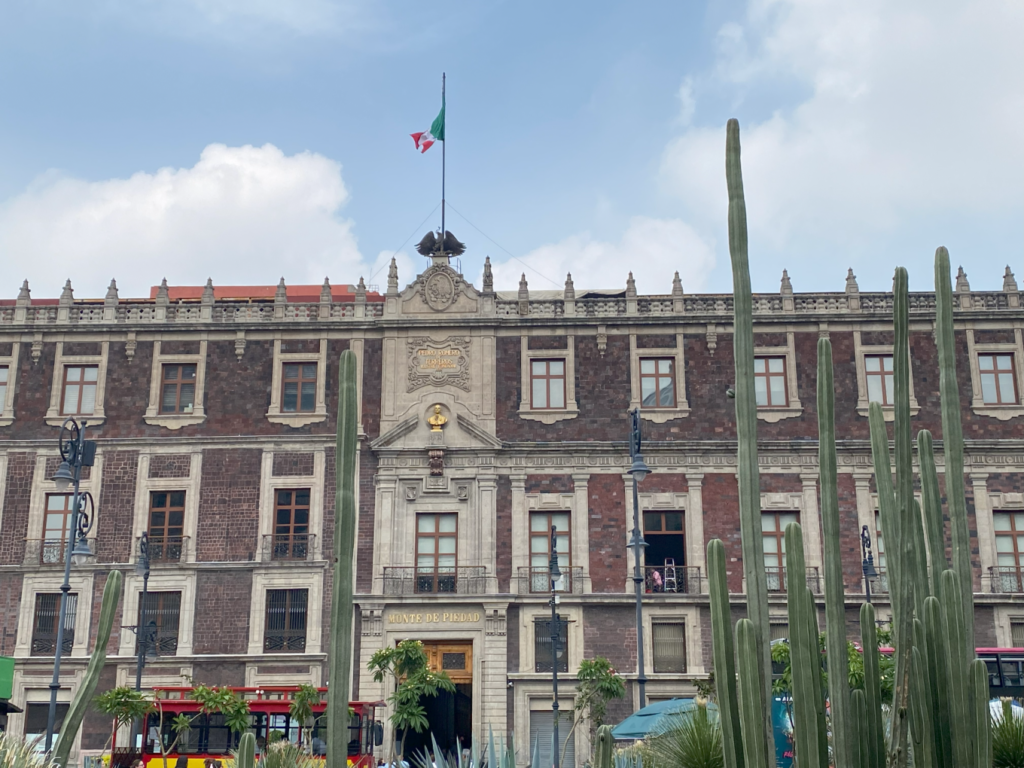

Inside the station, there were self-service machines to purchase metro cards. Each card costs 15 pesos and can be shared by multiple people, with a minimum top-up of 5 pesos. However, after inserting 20 pesos, the machine didn’t dispense a card. A friendly local woman helped us talk to the staff, who explained that the machine was broken. We tried again at the ticket counter, and another local man kindly helped us with Google Translate. Unfortunately, we were told we had to purchase the card again. He then guided us all the way to the correct platform, showing just how warm and helpful the people of Mexico are.
The metro was incredibly crowded, with no air conditioning, and we were jostled on and off the train. At Zócalo, we visited the popular landmarks, including the Gran Hotel, with its beautiful stained-glass dome, and strolled through Chinatown.
Since we still had time after exploring the historic center, we took a bus to the Indios Verdes metro terminal, hoping to ride Line 1 of the cable car. In Mexico City, the cable car system serves as public transportation, helping commuters bypass the heavy ground traffic. After searching for a while, we couldn’t find the entrance. Luckily, we encountered another friendly local who spoke English — he had lived in San Francisco for a year and a half and offered to guide us to the Line 1 station.
We walked through a sprawling market full of street vendors, and he warned us to be cautious, saying the area could be a bit unsafe. He advised us to keep our belongings secured, which thankfully kept us out of trouble. Unfortunately, Line 1 of the cable car was closed for maintenance, so we returned to the Indios Verdes station with our guide’s help. Not wanting to trouble him further, we followed the signs for Mexicable Line 2 on our own.
We found the entrance to Line 2, where tickets cost 20 pesos per person, with the return trip free. However, the public transit card could not be used for this line. We rode to the 7th station and back, with each one-way trip taking about 30 minutes. The view from the cable car was spectacular, offering a bird’s-eye view of the colorful houses across Mexico City. Although the area is said to be a slum, it felt more like a peri-urban neighborhood, and the ride was absolutely worth it.
In the evening, we took Line 3 back to our Airbnb and had dinner at Tacos Los Alexis nearby, enjoying more delicious tacos.
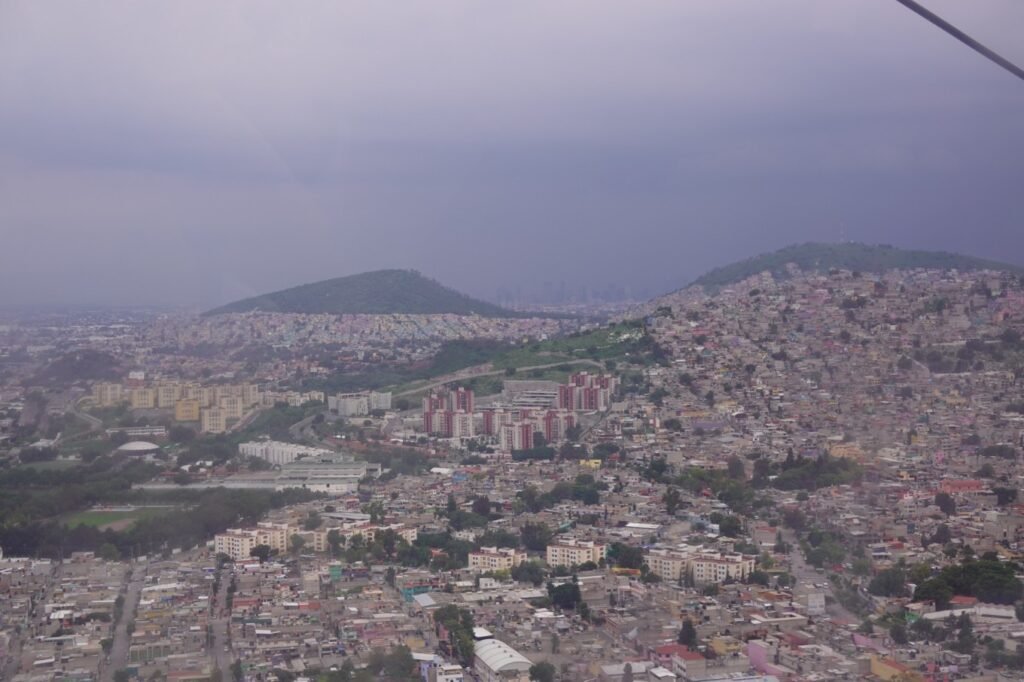
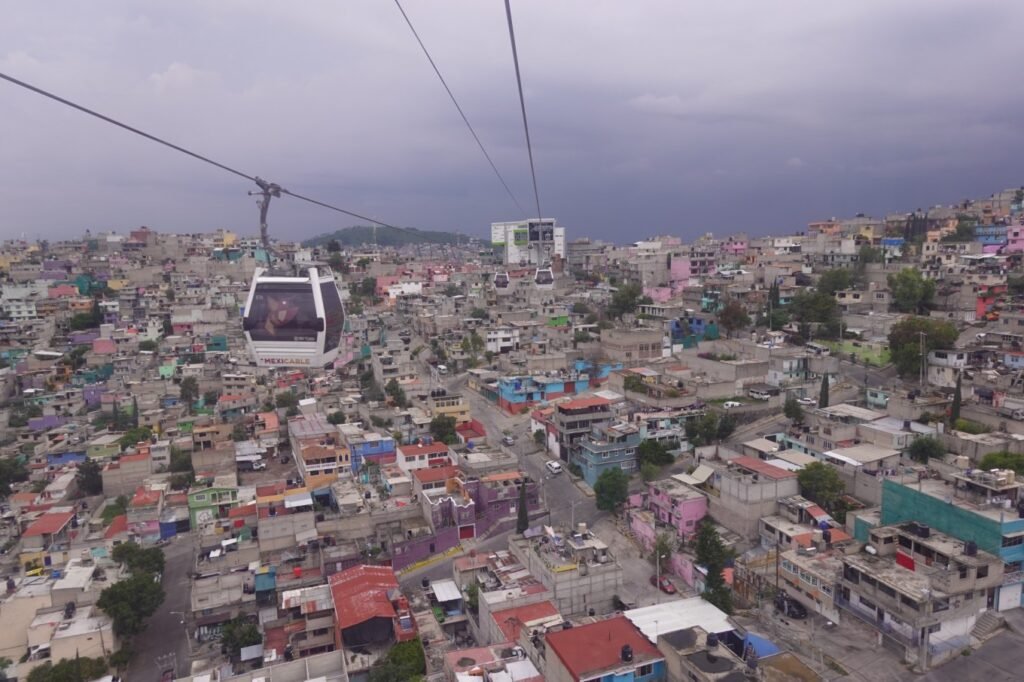
Pyramids of the Sun and Moon + National Autonomous University of Mexico
We took an early morning Uber to Teotihuacán’s Pyramids of the Sun and Moon, with the ride costing under 600 pesos one way. The driver dropped us off at the Pyramid of the Moon, and from there, we walked south along the Avenue of the Dead toward the Pyramid of the Sun. Since the COVID-19 pandemic, climbing the pyramids is no longer allowed, so we could only admire them from below. We could see some workers clearing weeds on the slopes of the pyramids.


The benefit of arriving early was the smaller crowds and cooler weather. We got there around 9 AM, and by the time we left before noon, it was already quite hot, and more tourists were starting to arrive.
Contrary to our concerns, getting an Uber from the pyramids was easy, with plenty of cars available. We took a ride back to Indios Verdes metro station and hopped on Line 3 to visit the National Autonomous University of Mexico (UNAM), reputed to be the best university in Latin America.
After exiting the metro, we passed a line of street vendors along a small path. We stopped at one stall for pork tacos, which were incredibly delicious — six tacos for only 60 pesos. We also enjoyed a large cup of freshly squeezed mango juice, a liter for just 35 pesos, which was fantastic.
We wandered around the university campus, which is open to the public yet feels naturally separated from the surrounding areas. The campus was bustling with students, and we made sure to visit the famous Central Library. The core area of the university was designed by renowned architects and has even been designated as a UNESCO World Heritage Site.
For dinner, we returned to Taquería Álvaro Obregón near our Airbnb. The waiter recognized us and warmly recommended which tacos we might like and which ones we might not enjoy as much.


National Museum of Anthropology + Vasconcelos Library
The National Museum of Anthropology in Mexico City showcases artifacts from various periods of Mexico’s cultural and historical development, from prehistoric times to modern history. Its most famous exhibit is the Aztec Sun Stone. While the museum doesn’t offer audio guide rentals, major exhibits have English descriptions, though smaller ones are only in Spanish. Since we aren’t well-versed in Mesoamerican history, we mostly wandered through to enjoy the sights. The museum also has a restaurant where we took a break — just as a massive hailstorm hit.
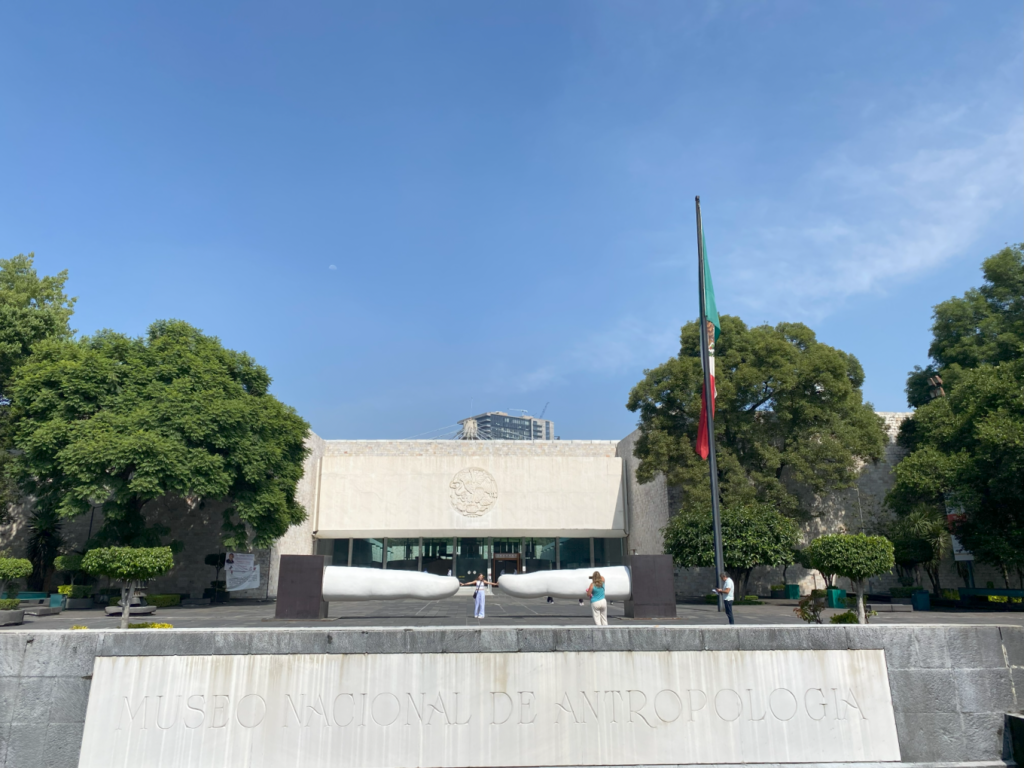

After spending about two hours at the museum and waiting for the rain to ease, we took an Uber to Biblioteca Vasconcelos. Shortly after we got into the car, we noticed a scorpion on a friend’s collar. Without thinking, we flicked it onto the floor under the driver’s seat. We quickly used Google Translate to alert the driver, who pulled over so we could all search for the scorpion, but we couldn’t find it. Eventually, we gave up and continued on to the library.
The library’s interior is unique, with striking architectural features. In the center of the first floor hangs a large whale skeleton, adding to the distinctive atmosphere.
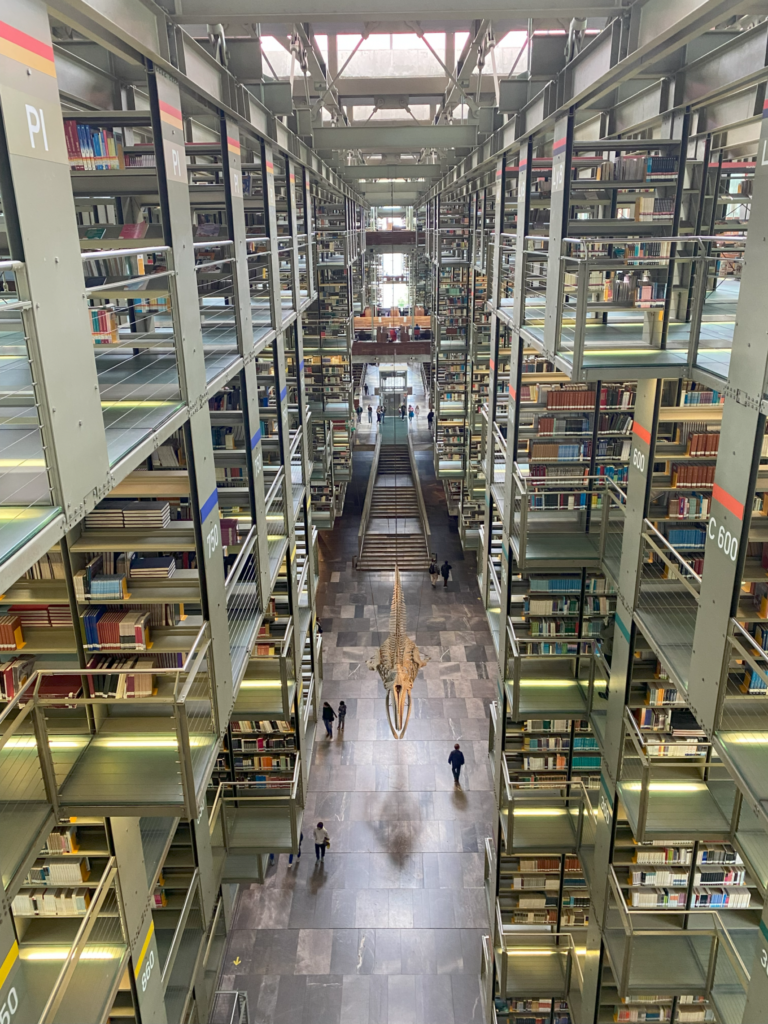

Tips
- There are plenty of Airbnb options, but it’s essential to choose the right area. We stayed in Roma Norte, which felt very safe, with many small shops nearby that we didn’t have time to explore.
- Many Airbnbs don’t have air conditioning, so keep an eye on that when booking. Also, the metro and most indoor spaces lack air conditioning.
- As a developing country, some things shouldn’t be examined too closely. For example, the industrial-style loft we stayed at in Guanajuato looked great at first glance, but the details were lacking — with many sharp metal edges that could cause scrapes. Both Airbnbs we stayed at had poor soundproofing, so I always sleep with earplugs.
- Sunscreen is essential. Although July is the rainy season, the sun is still intense during the day. It only rained briefly in the evenings, without disrupting our plans, and nights were surprisingly chilly.
- In Guanajuato, Uber drivers frequently cancel rides, so it’s best to allow extra time for everything.
- Mexico City is vast, crowded, and plagued by heavy traffic.
- While most locals are friendly, we were cautious, removing items like Apple Watches and jewelry and keeping them stored in our bags.
- English is not widely spoken, so Google Translate is a must if you don’t speak Spanish.
- Public restrooms are not free and charge a small fee.
- You can’t go wrong with tacos — every place we tried was delicious.
- Credit cards are widely accepted almost everywhere.

